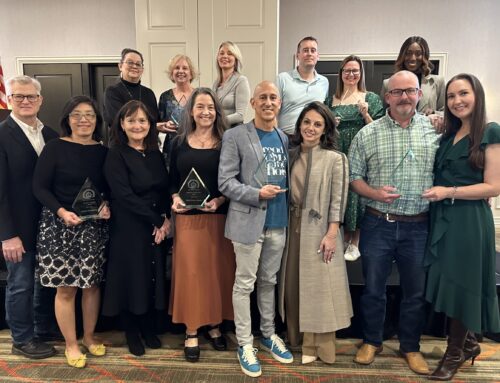
Brothers Baron Potter and Richard Potter III work on light fixtures at their family business, Potter Art Metal Studios. The 90-year-old company is restoring lights it crafted generations ago. Photo by Can Türkyilmaz
Woodrow Wilson High School cost $700,000 to build, between 1926 and 1928, and it was the most expensive school building in Dallas. The school board hired Potter Art Metal Studios to craft detailed pendant lights and lanterns for the school’s exterior to give it distinctive ornamentation. And when J.L. Long Middle School opened in 1933, custom Potter fixtures graced its exterior, too.
Now both schools are undergoing renovations, and once again, the architects called on Potter to refurbish the light fixtures the family-owned company created more than 80 years ago. Richard Potter, the company’s third-generation owner, becomes animated talking about the project. Aside from approximately 30 outdoor fixtures for both schools, Potter also is refurbishing 21 lights from the Woodrow auditorium.
“They’ll be gorgeous,” he says. “You couldn’t appreciate the detail before.”
Workers clean and repair the pieces before adding a chemical patina to darken the details and finally, seal them with an acrylic lacquer. They’re also being rewired. A few of the fixtures must be replaced, and workers are replicating the 1920s designs.
The fixtures at Woodrow, built in the Elizabethan style, are gothic. And the fixtures from Long are art deco. The project is estimated to cost about $100,000. Potter says he doesn’t know how much the lights originally cost.
This isn’t the first time Potter has been asked to restore its own work, which appears in landmarks such as government buildings and White Rock Lake, as well as countless homes.
Unfortunately, the renovation project doesn’t have the funding to refurbish 10 art deco pendant lamps in the J.L. Long auditorium. They would cost about $5,000 a piece to restore, and the architects have opted to instead purchase new lights. But Potter and designer Izabela Wojcik are hoping that Long boosters might unite and somehow raise $50,000 to save the old light fixtures. For almost 80 years, Long students have been looking up at those artfully crafted pendants, and it would be a shame to replace them with something inferior.
“Off-the-shelf fixtures are not going to look as good,” Wojcik says. “These looked good 100 years ago, and they’re always going to look good.”





